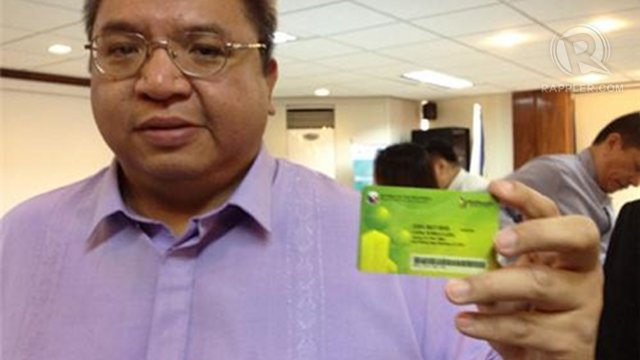SUMMARY
This is AI generated summarization, which may have errors. For context, always refer to the full article.

Manila, Philippines—Very soon, members of the country’s health insurance system & their beneficiaries will no longer need to fill-up cumbersome forms to avail of benefits whenever they get hospitalized or need to avail of medical benefits.
This is because by August 2012, the Philippine Health Insurance Corporation (Philhealth) will start issuing machine-readable cards or PhilHealth PVC cards.
The new cards are supposed to make it easier for health facilities to access the data of patients who are either Philhealth members or beneficiaries and report benefit claims. In the process, it should help improve members’ access to health services.
“Having this card is a dream. To walk into a hospital and simply swipe it to be granted access to quality health care without the paperwork is seeing our vision come true,” said Eduardo Banzon, Philhealth Chief Executive Officer & President.
Easy access to benefits
To avail of Philhealth benefits during hospitalization at the moment, a member who is currently employed has to fill-up a form and have the form signed by his or her employer before benefits can be deducted against the total hospital bill.
Many times, a member has to resort to merely getting a reimbursement due to the cumbersome process. Unfortunately, getting a reimbursement claim through the Philhealth bureaucracy could take months.
Banzon is hoping that the new machine-readable cards will increase benefits utilization by members. Doing away with forms, he noted, is key because they are not only difficult to fill-up, they are also make it difficult for the poor to avail of services. “We don’t know if they (the poor) can fill out forms or even read”
In malls, on wheels
The cards are not the only key initiatives the management of Philhealth has implemented over the recent months to encourage more people to become members and to make it easier for members to avail of their benefits.
Other projects in the works is PhilHealth Moves, a full service desk on wheels which is supposed to target designated barangays and big events and serve as a one-stop-shop on site.
.jpg)
PhilHealth Cares, a customer assistance initiative launched in May of this year continues to expand in more hospitals; having more available representatives to answer queries and assist in PhilHealth-related procedures.
Banzon also announced a plan to bringing their services to malls through Express service counters that would make it easier for members to update their data and pay premiums. The Express counters answer the demand for assistance given the amount of PhilHealth patients coming in each day.
“The malls have become the parks, the plazas in this country, so Philhealth will be there,” Banzon said.
Universal coverage by 2016
Universal health care coverage is one of President Aquino’s key campaign promises.
During the Wealth for Health Summit, Health Secretary Enrique Ona said he is making it his personal goal to see the number of Filipinos enrolled in PhilHealth rise from 34% in 2009 to 100% during the term of President Noynoy Aquino.
He adds, “All poor families should be guided in addressing their health needs. We need the enthusiasm, and not gripe, to uplift them from their situation and to improve access to quality health care.”
Data posted on the website of Philhealth shows that 78.39 million Filipinos, or roughly 82% of total projected Philippine population for 2011, were covered by Philhealth as of December 2011.
The Philhealth-covered segment of the population includes members and their dependents. Banzon said that the number has improved, as 85% of the total population is now covered by Philhealth.
Ona expressed optimism about the future of health care in the country. “The Philippines is a global inspiration for countries pursuing health care development,” he said.
According to the World Health Organization (WHO), the Philippines ranks 42nd in the list of countries that made significant improvements in developing their financing systems towards universal coverage. This means that the country has expanded into various forms of pre-payment and pooling to increase financial risk protection, particularly for the poor.
Health stakeholders
The Health for Wealth Summit was held on July 31, 2012 at the Development Academy of the Philippines, Ortigas Center.
Organized by pharmaceutical company Sanofi & the Philhealth, the conference gathered key players from both public and private institutions to discuss financing strategies towards attaining universal health care in the Philippines.
The event highlighted PhilHealth’s current programs and future plans towards the goal of making adequate health services accessible to all Filipinos, particularly the poor.
It also featured other government and private programs related to financing health-related needs and services.
Check out the live blog on the Wealth for Health Summit here. – Rappler.com with reports from Kara Vibal Guioguio
Add a comment
How does this make you feel?
There are no comments yet. Add your comment to start the conversation.